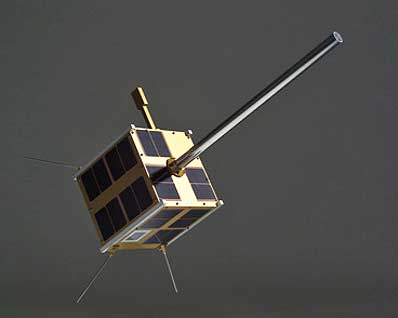Now it operates along with a dedicated satellite carrying the same receiver. The Station’s Columbus laboratory is being used to track Automatic Identification System (AIS) signals from ships at sea. AIS is, in a way, the marine equivalent of the air traffic control system, with commercial vessels mandated to carry AIS transponders. Switched on in June, ESA’s ‘Columbus AIS’ (COLAIS) project involves two different receivers sharing the same external antenna. The Norwegian Defence Research Establishment (FFI) and Kongsberg Seatex are responsible for the NORAIS receiver being employed for the first three months of operations, switching to the LUXAIS receiver in September, which has been developed by Luxembourg-based LuxSpace and EmTroniX.

The first Norwegian satellite developed in Norway, AISSat-1 was launched on 12 July 2010. It is being used to detect AIS signals from ocean-going traffic in conjunction with a comparable experiment aboard ESA's Columbus module of ISS. Credits: Norwegian Space Centre
AIS operates in a similar way to the mobile phone network: different transponders share radio channels by forming ‘self-organising cells’ on the same scale as the system’s range – about 40 nautical miles (70 km). If you fly over the ships in a plane, you will receive signals from neighbouring cells simultaneously, leading to co-channel interference. Fly over many more cells with a satellite and the result is extreme interference. “The challenge in space is that several AIS signals may arrive at the receiver at the same time, and we are testing to find out how to handle the resulting co-channel interference,” explained Mr. Eriksen. “Our receiver is what we call a software-defined radio, not a hardware-based analogue radio. The beauty of this approach is we update it with new algorithms that we test on the ground and then, when we’re happy we’ve made a step forward, we can upload the software to the ISS – or indeed our satellite – to create what is basically a second generation of receiver. The receivers in space are also being used to acquire samples of the unprocessed low-level signal which can then be downlinked for ground testing."

European USOCs - Credits: ESA

